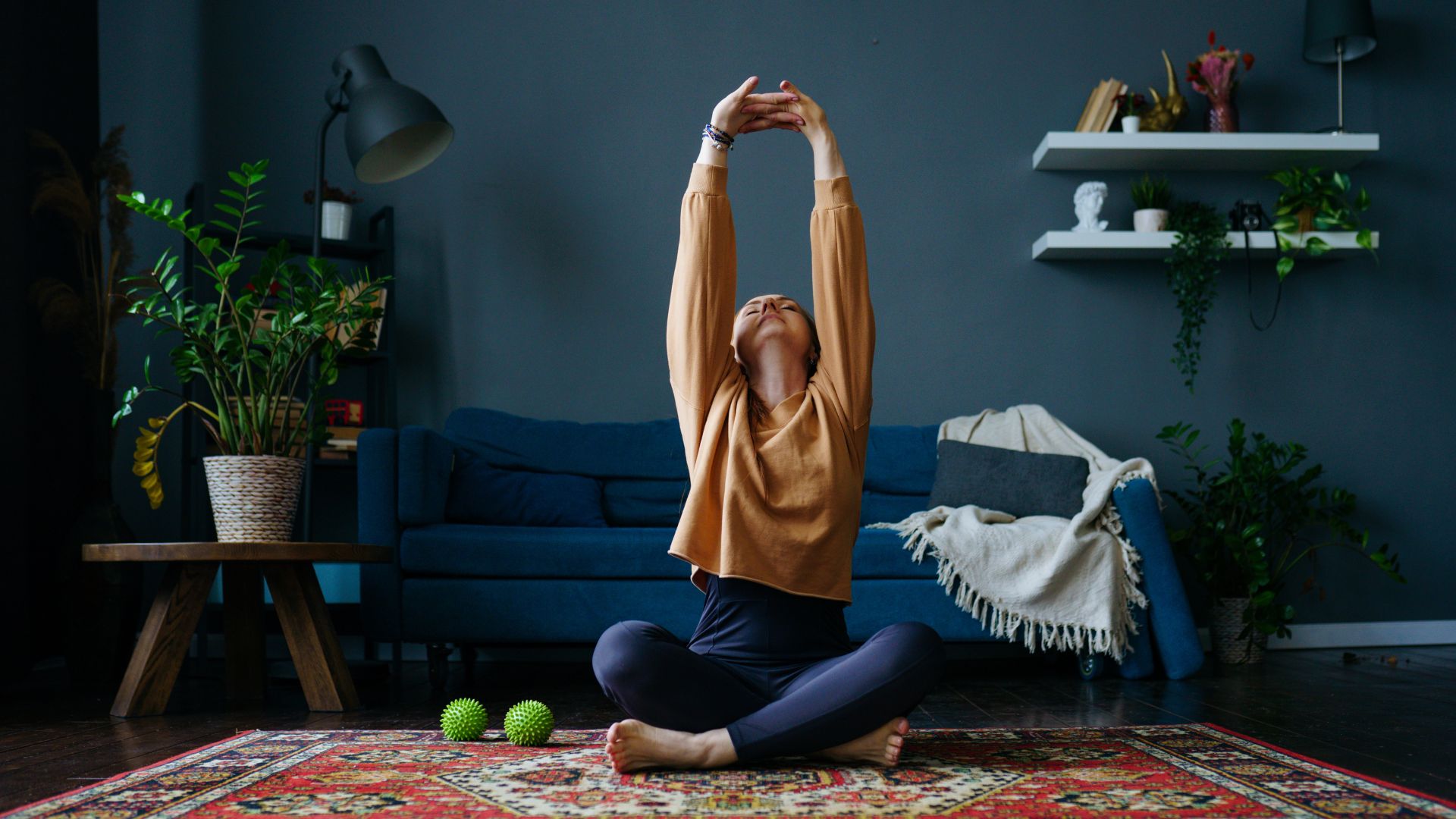
Core sliders are simple plastic discs that go under your feet or hands. They work against gravity to add resistance to your movements, and they can be a game-changer in floor Pilates workouts.
I understand that the expertise and equipment needed to conduct a Reformer Pilates class mean the session has to be more expensive than a regular class, but when prices rose at my local studio, I had to rein in my spending. That's when I discovered this accessory and switched to doing my strength training and a Pilates workout at home.
These core sliders can be used on their own or in combination with other workout equipment to build full-body strength away from the gym. Here's how I do it...
What are core sliders?
Core sliders are small, plastic plate-shaped discs that you step on or rest your hands on during a workout. As you push your arms and legs away from the centre of your body, you work against gravity and your body weight to stay balanced. That's where the benefit comes from.
They can also be helpful as a noise-limiting tool. In workouts that involve mountain climbers, for example, instead of pounding the floor, you can move your legs back and forward on the discs.
For progressive overload (making exercises harder over time to continue seeing progress), they can be a game-changer. Take the plank, for instance. Once you know how to do a plank, you can use core sliders to inch out one arm at a time and challenge your balance and core muscles, boosting your strength without having to add extra minutes to your workout.
Core sliders workout
To make the most of your core sliders, I asked Charlotte Dunnell, a certified personal trainer and strength training specialist, to recommend her favourite four exercises. These target the entire body and are a great way to reap the benefits of Reformer Pilates at home.
1. Plank with lateral slides
- Position a slider under each foot.
- Start in a high plank position, with your hands positioned directly under your shoulders and your legs fully extended, so your body forms a straight line.
- Your feet should be just a few inches apart, says Dunnell.
- Keeping your upper body still, slide one foot out to the side and then return it to the starting position.
- Repeat on the other leg and keep alternating.
Expert tip: "Make sure to keep your hips square to the floor," says Dunnell. "Try not to let your torso rotate at all."
3. Tempo mountain climbers
- Start in a high plank position with a slider under each foot.
- Bring one knee towards your chest and pause for one second while the knee is tucked.
- Extend the leg back to the starting position and then repeat on the opposite leg.
Expert tip: "Make sure to keep your back flat throughout the movement," says Dunnell, as if you were doing a high plank.
3. Slider body saw
- Start in a low plank position, with your forearms on the ground running parallel to each other.
- Your elbows should be directly under your shoulders.
- Position a slider under each foot.
- Keeping your forearms still on the floor, slide the rest of your body back a few inches and then reverse the movement, bringing yourself back to the starting position.
Expert tip: Remember to keep your body in a straight line from head to toe, with your core engaged throughout.
While this might look like a simple exercise, it's one of the better core exercises to do at home for building strength in the abs, obliques, hamstrings, and lower back. It can also help improve rotational mobility in the spine, which is beneficial for people like me who spend their days sitting down.
4. Lunge variations with sliders
- As an alternative to doing lunges on the carriage of a Reformer or walking lunges in the gym, stand upright with your back foot on a slider.
- Slowly, with your core engaged, push back with the back leg.
- Staying controlled, push back and complete a lunge, stopping when your front knee comes 90 degrees to the ground.
- Push up from the ball of your front foot, pulling your back leg in, and returning to the starting position.
Expert tip: To make these harder still, grab a pair of dumbbells or a set of kettlebells. Adding weight will force you to work even harder to stay balanced and controlled.
Are core sliders effective?
Yes, absolutely. "Sliders can be a useful piece of equipment to have on hand to add variety to your workouts, to progress bodyweight exercises and to help challenge stability," says Dunnell.
"The sliders add more instability to the exercises, thereby forcing your deep core muscles (i.e. the transverse abdominis and obliques) to engage more than they would in a standard plank," she says.
Using sliders forces you to slow the movements down as well, so you don't lose your balance. "This has the dual benefit of engaging the supporting muscles to a greater degree, to help control the inward and outward phase of the movement, and increasing time under tension," she says. "Time under tension is a key driver for muscle growth."
For me, core sliders are an essential in any bodyweight workout when I want to challenge myself or focus on improving my balance. They are also small, easy to store or pack in a suitcase for holidays, and cheap to buy. Win.
However, you can also use small towels folded up for the same purpose and skip the shopping process, the PT says. "I often incorporate exercises using two small towels in place of sliders for my clients who are travelling or doing home workouts with limited equipment," she says.
Do core sliders work on carpet?
Core sliders work best on carpet, I would say. As the discs are often made of plastic, they glide seamlessly across most types of carpet and rug, whereas towels get stuck with friction.
They also work on grass and rougher tile flooring, making them a truly versatile workout tool.







